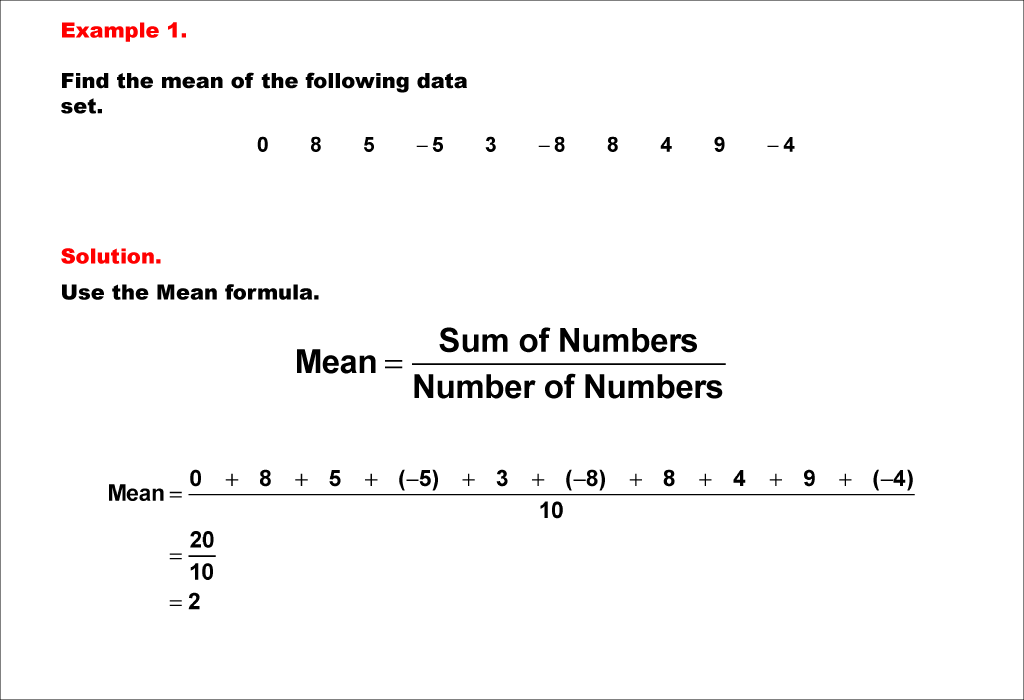
Display Title
Math Example--Measures of Central Tendency--Mean of Data That Includes Negative Numbers--Example 1
Display Title
Math Example--Measures of Central Tendency--Mean of Data That Includes Negative Numbers--Example 1

Topic
Measures of Central Tendency
Description
This math example demonstrates the calculation of the mean for a data set that includes negative numbers: 0, 8, 5, -5, 3, -8, 8, 4, 9, -4. The example emphasizes the step-by-step process of finding the mean, showing how to handle both positive and negative values in the calculation.
Measures of Central Tendency, particularly the mean, are fundamental concepts in statistics. They provide a single value that represents the center or typical value of a dataset. This collection of examples helps teach this topic by presenting various scenarios where students can see how the mean is calculated, especially when dealing with datasets that include negative numbers.
The importance of multiple worked-out examples cannot be overstated. By presenting students with a variety of scenarios, they can develop a deeper understanding of the concept. These examples allow students to see patterns, recognize common steps in the calculation process, and build confidence in their ability to solve similar problems independently.
Teacher's Script: Let's focus on finding the mean of this dataset. Notice how we treat positive and negative numbers equally in our calculation. Remember, the mean gives us an average value that represents the entire dataset, regardless of whether the numbers are positive or negative.
For a complete collection of math examples related to Measures of Central Tendency click on this link: Math Examples: Measures of Central Tendency: Mean Collection.
| Common Core Standards | CCSS.MATH.CONTENT.6.SP.B.5.C |
|---|---|
| Grade Range | 6 - 8 |
| Curriculum Nodes |
Algebra • Probability and Data Analysis • Data Analysis |
| Copyright Year | 2021 |
| Keywords | mean, measures of central tendency |